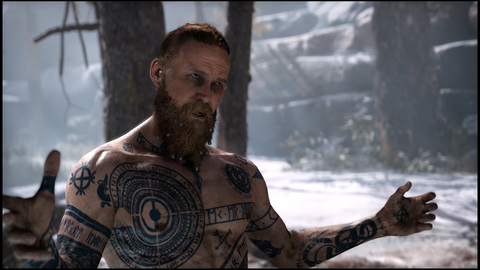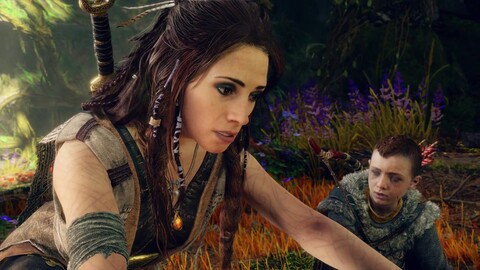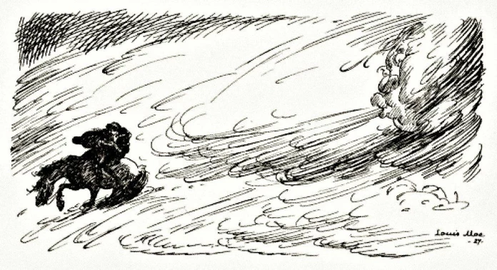


This post contains major spoilers for the plot of God Of War (2018) but not for God Of War: Ragnarok since I haven't seen the entire game yet. Proceed at your own risk.
With the topic of climate change in the form of environmental disasters on the mind, and a new installment from one of my all-time favorite game franchises in existence having released yesterday, I figured I would find a way to connect the two in this week’s blog post. Luckily for me, God Of War: Ragnarok is set within the catastrophically intense winter foretold to occur just before the end times in Norse mythology: Fimbulwinter. This got me thinking—what would happen if Fimbulwinter actually happened in today’s world? First, though, some background context.
God Of War is a series of video games produced by Santa Monica Studios for the PlayStation(s) and PC platforms that tell the story of Kratos, a Spartan warrior who makes a deal with the Greek god Ares and through many mostly irrelevant happenings ends up exacting revenge by killing Ares and eventually the rest of entire pantheon of Greek deities. The original trilogy and spinoffs are known for being incredibly bloody and violent, as the original Kratos is little more than a rage-filled killer for killing’s sake. But in 2018, the franchise, out of Greek gods to kill, rebooted into an entirely new setting, with fantastically improved graphics and gameplay.

This new duology, began by God Of War (2018), describes Kratos’ new life with his son Atreus in a chilly Nordic setting amongst the Norse mythos’ deities. The game begins with Kratos cremating his now-passed wife, and beginning the adventure with his son to spread her ashes from the highest peak in all the realms—of which there are several, as in Norse mythos the world is balanced on the Yggdrasil tree, each branch another realm—which turns out to be in Jotunheim, the home of the Giants. This causes problems as Jotunheim has been sealed off from any outside contact for a very long time, and getting in proves to be a remarkable challenge.
This is compounded by the fact that Kratos’ presence here at all is already putting the local deities on high alert. Odin, the king of the gods, wants him dead, and over the course of the game sends several other deities to try and do the deed, but the most important player here is Baldur. Son of Odin and Freya, Baldur was blessed (or cursed, depending on who you ask) by his mother to never feel pain, but the spell ended up meaning he could never feel any sensations at all, driving him mad and causing him to seek out danger in an attempt to poke a big enough bear to break the spell. At the climax of the game, a spectacular fight between Baldur and Kratos leads to one of Atreus’ old mistletoe arrows piercing his hand and breaking the curse, as mistletoe is the spell’s one weakness, and Kratos finally kills him for good when he attempts to strange his mother Freya for what she did. In ending the cycle of revenge and killing the Norse god of light and purity, Kratos essentially breaks the final straw that begins Fimbulwinter, and eventually Ragnarok, the Norse world-ending event.


This is where God Of War (2018) ends, and towards the middle-end of Fimbulwinter is where Ragnarok picks up. It’s instantly apparent how everything is deep-frozen and covered in never-ending snowfall, since the game’s beginning is in the same environment that the 2018 installment took place in. While there was some snow on the ground, the environment looked healthy and neighboring areas were of fairly temperate climate, but the world is now more akin to a boreal wasteland.

Interestingly, however, Fimbulwinter has some basis in reality. It is a concept directly lifted from real Norse mythology, after all. A research team, through the analysis of ice cores and tree ring chronology, pinpointed a massive volcanic eruption somewhere around 535 or 536, and a second eruption about a year later in northern Europe. This would have easily caused a deep, long, and lethally intense winter that lasted years—Fimbulwinter is prophesized to last three—to be easily embedded in the spirituality of Nordic people at the time. The volcanic eruption would cause smoke and ash to block out sunlight, drop temperatures, and would tie right in with historical reports of famines and crop failures across Europe and even parts of Asia in the late 530s and 540s. Analysis of pollen buried in bogs faces a sharp change, existing archaeological sites drop in quantity by over 70%, and the overall population of Scandinavian areas could have dropped by as much as half.

Obviously, if a disaster occurred on this scale again today, we would be at least marginally more prepared to weather it than in 536, but just like before it would still likely take out a majority of agricultural production in Nordic countries and cause devastating famines, as well as many deaths from exposure as unprecedented low temperatures occur with very little time to adapt. I can only hope that a theoretical second Fimbulwinter wouldn’t cause such vast amounts of casualties thanks to modern technology and human adaptability, but disparities in wealth exist even in the poster-child modern and advanced countries; there would unavoidably be much loss of life in children, the elderly, and those who can’t afford to winter-proof for “The Winter to End All Winters.” We discussed this in the context of hurricanes in low-lying areas like New Orleans in the Gould and Lewis readings, but when it comes to disasters, anyone is vulnerable to the right catastrophe.
 ←
←